When the good folks at The Grow Network asked me to write an opinion article on current issues with food production and the supply chain, I was glad they specifically asked for my opinions. I have A LOT of opinions on food! It would be no exaggeration to say that I have been almost obsessed with food since I was a small child. Food was my family business.
Independent Grocers and High-Quality Food
My maternal grandparents and great grandparents had centuries-old farms in eastern North Carolina. I was blessed to know my great grandparents—who lived into their late 90’s—and to benefit from the quiet, solid wisdom of farmers. I was also blessed to have a grandmother who was widely acknowledged as the best cook in the region. Our family lore says that strangers would show up at funerals and family reunions if word got out that my grandmother was cooking, and that contains strong elements of truth!
My dad’s family-owned grocery stores, and our family business was a small market, cheese house, and tavern in a resort area of the Appalachian Mountains. There, our summer “neighbor” was the daughter of Irma Rombauer, author of “The Joy of Cooking”—a feisty, extremely wealthy, elderly woman with many opinions on food … not to mention opinions about my father, whom she despised.
You May Also Enjoy:
“How to Create Food Security for You and Your Family”
“5 Keys to Food Security in Extreme Weather, for Home Gardeners”
Regardless of her personal feelings, she shopped with us because of the quality of the food. It was a unique time and place, where the poorest of the Appalachian mountain people and summer visitors that included celebrities like Frank Sinatra and Charles Kuralt, as well as “old money” industrial barons, shopped and ate side-by-side. The reason, again, was simple: the quality of the food. We had fresh, local, seasonal produce; an in-house (real) butcher who cut meat to order; imported wine and cheese; and old-fashioned barrels of pickles and minced meat. Although long gone, the smells of that store linger in my dreams with the memories of farm life and my grandmother’s cooking that shaped my tastes and set standards far too high for modern convenience.
The Death of Local Fare
It was in the 1990’s that things really began to change. The small, independent grocers could no longer compete with the large chains in most markets … and, farming changed. No longer were the markets buying locally in many places. The North American Free Trade Agreement (NAFTA) resulted in domestic farmers—who had to pay wages set by law and comply with regulations—having to compete with foreign producers who paid low wages and had little concern for labor conditions or the environment.
The small, family-owned farms largely disappeared. Government policies and “agricultural education” in the universities encouraged “mono-crops”—devoting all available land to one crop (soybeans one year, corn the next, etc.) or to chickens or hogs. “Economies of scale” were coming into play more and more.
Economic efficiency dictates that if one person can produce a “widget” for $1 per, while another must invest $1.50 per widget, and both of them can only sell their widgets at $2 a piece, the one who can make it cheaper is the one who should make it. The one who cannot must find another way to make a living. Although sound reasoning, such principles of economics say nothing about quality. In fact, lower-quality widgets that wear out faster and have to be replaced more often are a great incentive to the widget industry to make cheap, disposable products.
The Disadvantaged Family Farm
In terms of farming, the domestic farmer was obviously disadvantaged in competing with the foreign producer, especially when those producers were subsidized by their governments for the express purpose of driving other nation’s farmers out of the market.
But the small farmer also lacked the advantages of the large farming corporations. The almost unbelievably high cost of farm equipment, hybridized seed, fertilizer, pesticides, and herbicides (necessary to produce mono-crops) becomes much more affordable for the farmer who has large land holdings.
A piece of large equipment costs the same for the farmer who has 100 acres as it does for the farmer who has 100,000 acres… but the larger farmer can make more money faster. The chemicals may cost the larger farmer less because he buys in such massive quantities. The low profits per acre of farming cheap commodities add up to quite a bit on a large scale … but not to much at all for the small farmer.
As Joel Salatin has written about exhaustively, the livestock farmer was even more disadvantaged due to the centralization of the meat-packing industry—he or she had to sign exclusive contracts and agree to specified “Concentrated Animal Feeding Operations” and management practices to ensure any return on his labor and investment at all.
Restaurant Chains and the Industrialization of Food
Then, enter industrialized restaurant food. (I do not know when such operations began—they likely have their roots in such venerable brands as Campbell’s Soup and Birds Eye frozen foods. Surely they grew out of World War II and the need to feed thousands of troops quickly, efficiently, and cheaply. If you know for sure, I hope you’ll share your knowledge in the comments section below!)
But, in the 90’s, the Sysco, Aramark, and US Foods trucks were definitely flooding the highways. Some of these companies specialized in providing food for hospitals, schools, or prisons. Some existed to serve the restaurant industry.
Well, back to economies of scale. Why should a large corporation invest the time and energy to hire chefs and train kitchen staff, deal with numerous vendors, etc., when one big truck could deliver prepared food—whether it was simply bagged lettuce or full dinners?
For example, millions of servings of chicken parmesan could be made in a factory, in conditions that limited food-safety liabilities. Each serving could be identical, so as to maintain the “flavor” (or lack thereof) associated with specific chain branding. It could be delivered, microwaved, and put before a customer with minimal handling by restaurant staff. And it could be done cheaply.
No longer did a chef have to cut the meat (no concerns about portion size). No longer did the chef buy the produce, cut it up, and make the sauce. No longer were there variations in recipes. No longer were there chefs. The sad reality is that if you can name a national restaurant chain—if they advertise on television with specific branding—their “chefs” are little more than kitchen managers … “re-heaters in chief.” But the business can make a meal for $2, sell it for $15, keep their overheads low, and keep everybody “happy, happy, happy.”
Why Did We Allow This?
But, why?
Well, it could be generations having grown up on “chicken nuggets” and not having developed their taste palates. Or it could be that food scientists have developed an arsenal of “flavor enhancers” (some of which may be quite poisonous and even addictive) to make nearly tasteless, low-nutrition “food” not only agreeable, but craveable.
Why did the public accept flavorless, truly awful tomatoes shipped in from thousands of miles away when the grocery stores stopped buying the local farmer’s produce? Is it that they are all so pretty and uniformly red even in the winter?
That is what we are told.
But could it be that in many places, we honestly just didn’t have a choice? If that store is the only source for produce in your area, you take what you can get. But, why did we accept it? After all, the customer is king—our dollars demand!
Pondering this, I well recall my last lunch from a public high school cafeteria some 25 years ago. The “industrial food” was supplied by one of those big trucks. I sat there, in disgusted awe, examining what was called a pork chop. It was an unidentifiable mass of finely ground dark grey “meat” that actually makes fast food “pink slime” look good.
It was boneless, of course, molded into roughly the shape of the state of Texas, breaded in very salty batter and browned before being frozen and shipped to my school, thousands of miles from its origin. The texture was of mush and gristle. I was physically incapable of eating more than one bite. I ate the cloyingly sweet “dinner roll” and threw the rest away. Everyone looked at me like I was crazy.
In a state where a terrifyingly large percentage of public school students GRADUATE functionally illiterate, unable to do simple math and completely ignorant of history, one may rest assured that the lessons learned did include training to be “herded like cattle and slopped like hogs”… and thus, the modern American consumer is born.
The one other thing they are taught, though, is that they are more educated and privileged—more enlightened—than their parents and grandparents. While tests and textbooks from previous generations prove that to be a dangerous fallacy, one would be hard pressed to find an average American who has even a clue of what previous generations knew. This is true in terms of facts or skills, but most importantly for this conversation, it’s true in terms of food.
The High Cost of Incredible Convenience
Certainly, we live in an era of incredible convenience. I sit here, today, in a town of around 30,000 people, with at least 3 grocery stores in any given direction within a 10-mile radius. Beyond this amazing feat, the prices are reasonable. Never before in history has one had to expend so little effort to obtain food. Of course, it is also true that there are “food deserts” in large urban areas, but that is a topic for another day.
Regardless, it is a modern marvel that I can have affordable, tropical fruit in winter. That cannot be denied. There are also more “ethnic” foods available than there were just 20 years ago. All of that is delightful.
But, is there more variety than there used to be? No.
I collect old cookbooks—often, very old—but one of my favorites was published in 1941. It lists nearly 100 varieties of apples that the average consumer could expect to find at the market, giving the qualities of each and their recommended uses. 100! Out of the dozen grocery stores around me, they have 4. Okay, maybe I missed one. We’ll say 6 just to be charitable.
Moreover, these apples generally have the texture of cotton and the flavor of … well, not much at all, really. Like the chemically ripened, foreign-grown tomatoes, they look pretty, but they are not worth even their low price.
The old cookbooks feature seasonal menus of an incredible harvest of meat, fish, and vegetables—greens and squashes, root vegetables, a garden cornucopia. And when I say “meat,” I don’t mean just beef, pork, and chicken, but ducks, geese, venison, quail, lamb, mutton, turtle, etc., plus a variety of freshwater fish and seafood that would stun a modern epicurean.
All of this was common fare just a few decades ago—before the “Pepsi Generation” was encouraged to “buy the world a Coke” to achieve universal peace and harmony.
Today, my grocery stores have beef, pork, and chicken—although they don’t taste or smell like they used to—seasonal turkey (aside from deli meat), and farm-raised, tasteless tilapia and catfish. (Sure, they have some frozen, mostly imported seafood in the specialty case, and you can pay a lot for it; but that’s the less common fare of the day.) The middle aisles are row after row of fillers made from soybeans and corn syrup. The milk is all ultra-pasteurized for long shelf life … and to compensate for unhealthy cows. Taste and nutrition seem to matter little. The quality of life of either the farmer or the livestock seem to matter nothing at all.
Well, maybe I was spoiled. I grew up surrounded by independently owned restaurants—southern country cooking, Italian restaurants owned and operated by recent immigrants, Greek-owned diners, immigrant-owned Mexican, Chinese and Thai restaurants, and more. I learned to love (and make) pizza not Pizza Hut or Dominos, but from immigrant owner/chefs who made their dough, sauce, sausage, and even cheese in house and by hand. But Cracker Barrel opened and the family-owned southern buffet went out of business. McDonald’s opened and the diner closed. Olive Garden opened and the legit Italian restaurants with their hot-tempered, elaborately mustached owner/chefs shut down. PF Chang opened and the little family-owned Chinese place where the cash register was run by a 9-year-old girl (because her English was best in the family) closed. I found myself in a land of frozen dough; rubber, pink-slime “beef”; and popcorn shrimp from the sewers of China.
Why the Supply Chain Fell Apart
And then, came the virus. That brings us up to date. When the novel coronavirus hit, and our economy shut down, we began to see the fragility of a food system built almost entirely on economies of scale. An entire distribution system built on minimal/demand stocking fell apart.
See, when you buy an item from, say, Wal-Mart, computers record that transaction. If that store sells 100 widgets per week, they will stock approximately 100 widgets. They may keep an extra 10 on hand, in case of increased demand. But, storage costs money. If your store usually sells 20 cans of tuna in a week in March, the computers reorder that exact amount. So, when the virus hit, and those cans of tuna sold in the blink of an eye due to panic shopping, there wasn’t much left in the back with which to restock.
Within days, the supply chain basically fell apart. For the most part, there were simply no great warehouses full of what was needed—that would not be efficient. When nearly everything you buy is produced in foreign lands, it takes a while for those ships to cross the oceans.
Restaurants had to close to the public and exist on takeout. Months later, most are still only operating at 50% or less capacity. The independently owned restaurant has an incredibly small profit margin. They are not like the big chains that utilize industrial food. They order just enough to use because refrigeration and storage costs money … and they can’t return it. They bring in just enough to pay rent and staff and comply with outrageously burdensome regulations and taxes, and hopefully just enough over that to make a modest living.
Sure, the government helped a little to keep them afloat. But, if the little guy could barely compete with Red Lobster last year, how can he now? The chains not only make larger profits, but they employ more people and get more government help. The big farmers have lobbyists and federal agencies to help them. If the farmer who was barely making ends meet couldn’t get his produce or livestock to market due to virus-related disruptions, will he survive?
It’s Time to Take Responsibility for Our Food Again
My friends, we have hard lessons from which to learn. If we go on being “herded like cattle and slopped like hogs,” where will we be the next time the supply chain is disrupted? We must begin to retake responsibility for our food. We may have to choose sometimes between convenience and food security.
A secure food chain is one with diverse sources. A secure food chain is one with local producers. A secure food chain may mean changing laws so that a farmer can raise livestock, butcher it onsite, and sell it to his neighbor … or reducing regulations so that startup costs for small restaurants are not so outrageously high as to price most people out of the market.
Most people simply cannot afford to buy all the required equipment for a commercial kitchen; make everything handicap accessible; provide public restrooms; and pay staff, payroll taxes, permit costs, and more. There may be some risk involved. It may well be that if Farmer or Chef Nasty sells you food that makes you sick through gross negligence or something worse, you sue that person, make a fortune, and put him out of business rather than complain to your local government employee (who probably doesn’t give a darn in the first place and will only impose a fine at best). It may mean growing and producing more of our own food and learning techniques for food storage.
What Do You Think?
You’ve now seen just how fragile our system has become. I’d love to hear your own thoughts on how we got here, and how we can solve this crisis. Let me know in the comments below!

Judson Carroll grew up in both the mountains and coastal swamps of North Carolina, on family farms that predate Americas’ founding. Although he holds a Permaculture Design Certificate, most of what he knows about permaculture and gardening he learned from his grandfather and great grandfathers, who had a permaculture homestead and “food forest” before “permaculture” was a term. Judson learned to cook from his mother and grandmother, who were ladies best described as profound. He spends most of his life in the woods or on the water, and tries his best to be the kind of old fashioned, traditional, Southern gentleman who would make his ancestors proud.
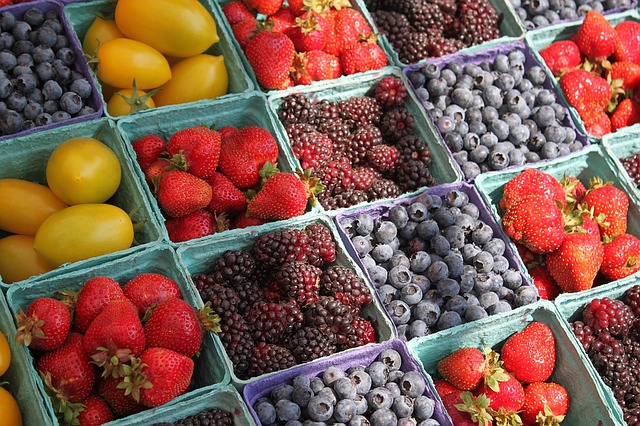
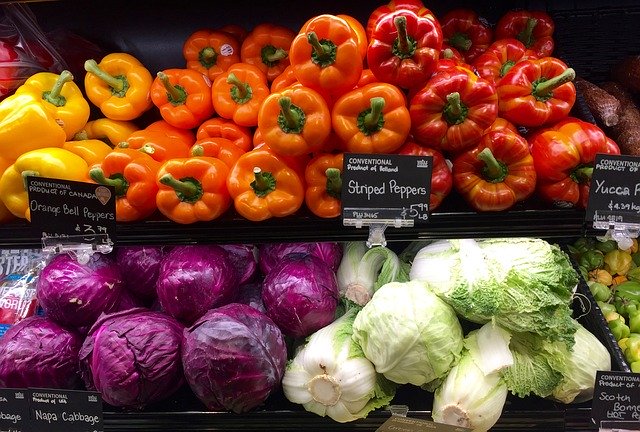
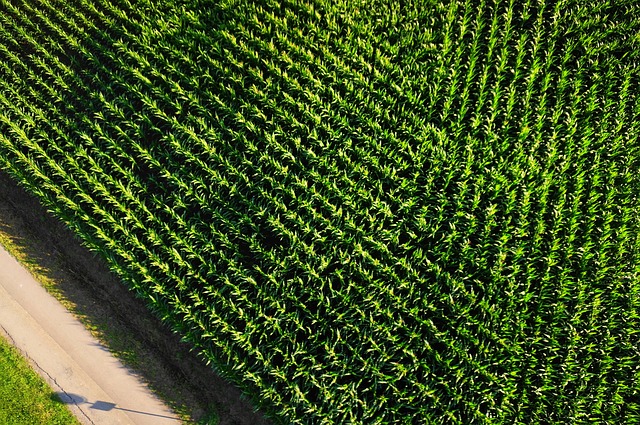
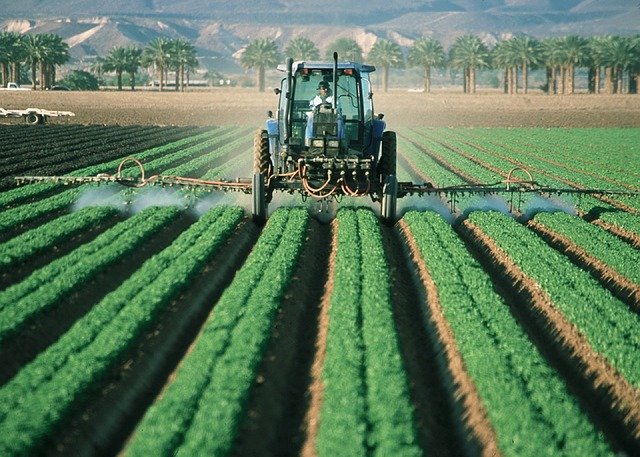
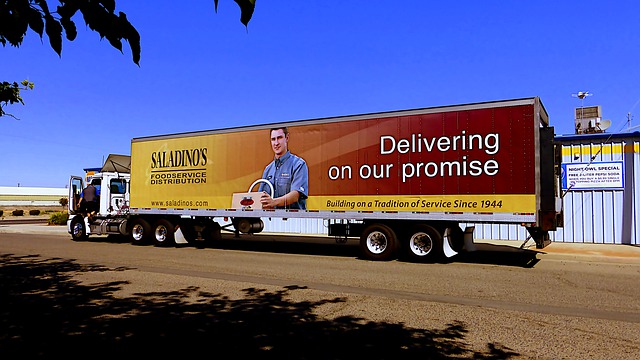
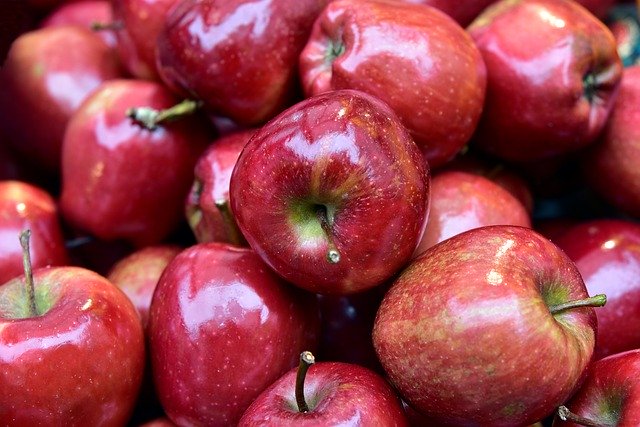
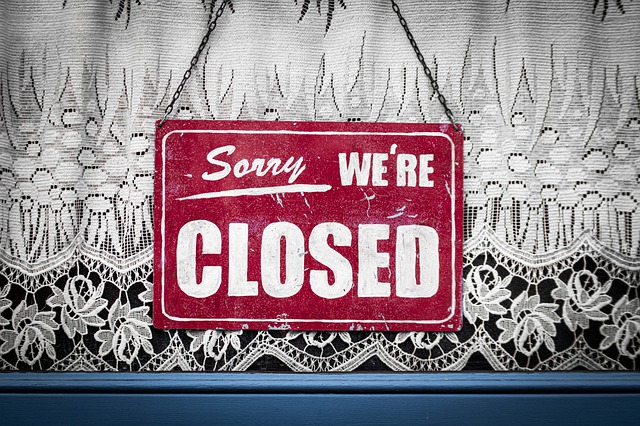







COMMENTS(15)
Awesome article, Judson! Well written!
Thanks!
Great article! My sentiments exactly. Food, real food, is a cause I stand behind 100%. This is a very serious issue that too many people either don’t know enough about or don’t care. Awareness is key, thanks.
Thanks! Hopefully people will begin to wake up.
“Maslow’s Hierarchy of Needs” lists air, water, FOOD, rest and health at the lowest (most primary) level. Moderate to long term interruption in supply of any of these items is a critical situation. When we abdicate our responsibility to provide these for ourselves (where that is possible) then we must ensure a multi-sourced, adaptable and resilient supply. Either way it’s still our responsibility to make sure we have access to our basic needs.
We must all grow and or forage for what food items we can. Where there are shortfalls, we must find these multiple resilient and if possible local resources to supply us. Depending on a chain of tens or hundreds of links to provide our needs is ridiculous.
I agree entirely. I’ll toss out another concept “Normalcy Bias”… the assumption that everything will return to normal. Our system is quite fragile and becoming more so.
Insightful article! In my rural area of western Washington State we live in an area with no major grocery store within 2 miles. Thank goodness! Since I grew up in “the city” I’ve seen food go from my mom’s backyard garden to bruised food at the local major chain grocery store. On the small farm my husband and I have, we grow nearly all of our own fruits and vegatables. I agree with you that we must take back our food production. I’m not sure what I can do to help the cause but, I’m here to try.
I’m looking forward to getting back to my home in the Appalachian mountains – much like the Pacific Northwest (temperate rainforest) but no seafood or salmon. That said, I can eat wild food and grow a good garden there. Winters are tough, but they also teach one to prepare.
You nailed it! We have gotten “above our raisin” and “forgotten where we came from’. Life wasn’t intended to be lived in a haphazard fashion. For years people have been told to not live paycheck to paycheck but to put something back for a rainy day. It’s been years since I’ve heard anyone say the same thing about food.
Thanks, and I agree! My next article gets into some basics of food storage.
Hi Judson, I absolutely loved your memories of the grocery store. It reveals such a great truth – quality food transcends everything.
“a unique time and place, where the poorest of the Appalachian mountain people and summer visitors that included celebrities like Frank Sinatra and Charles Kuralt, as well as “old money” industrial barons, shopped and ate side-by-side. The reason, again, was simple: the quality of the food. We had fresh, local, seasonal produce; an in-house (real) butcher who cut meat to order; imported wine and cheese; and old-fashioned barrels of pickles and minced meat.”
In a virtual way, the Grow Network is kind of like that. We have every stripe of political group, every religion (and athiests), every kind of diet, every socio-economic level… yet we all come together here in this place peacefully bound by our love of good food..
I’m honored that you found it worthwhile! Your description of TGN is exactly why I like it here.
Check out the book _An Economist Gets Lunch_ by Tyler Cowan. Cowan is both a professional economist and a serious foodie. He explains in detail how American food culture deteriorated, why Mexican food in Mexico tastes different from Mexican food in the US (even American food in El Paso, right on the border), and other areas of interest.
I’ll check that out – thanks! It sounds right up my alley.
I read it – it was a good book. I don’t agree with all of the author’s points – GMOS, for instance (he is a fan), but his insights on grocery stores, food trends in America and restaurants we quite good.